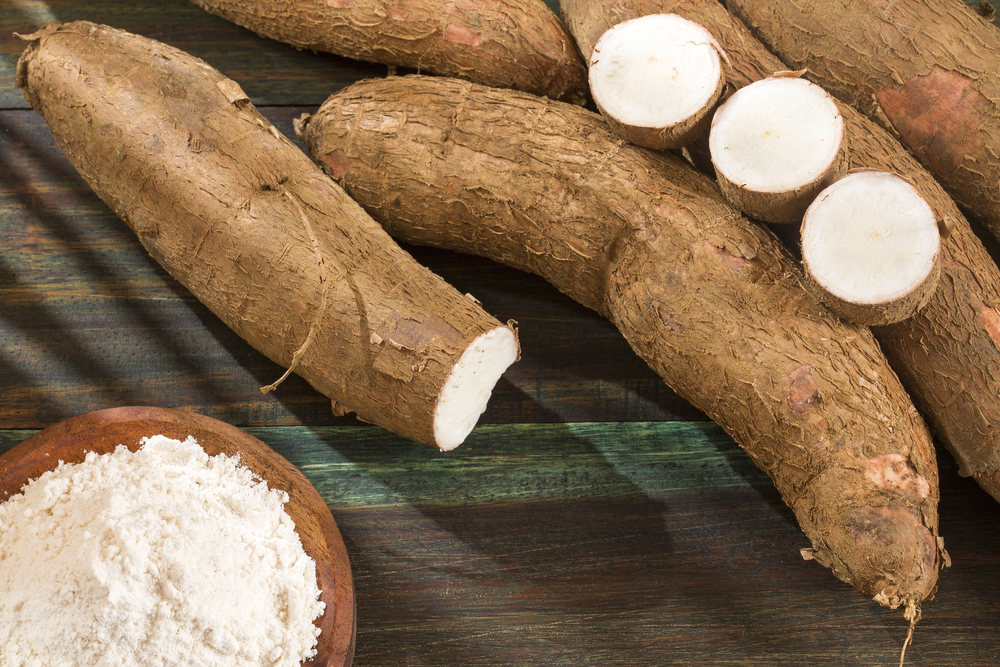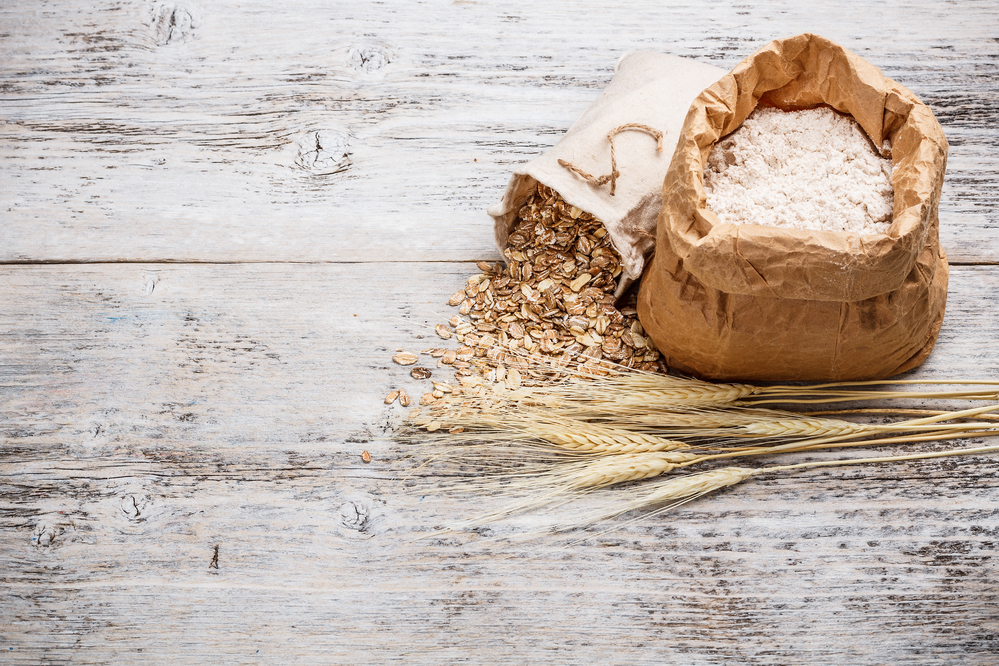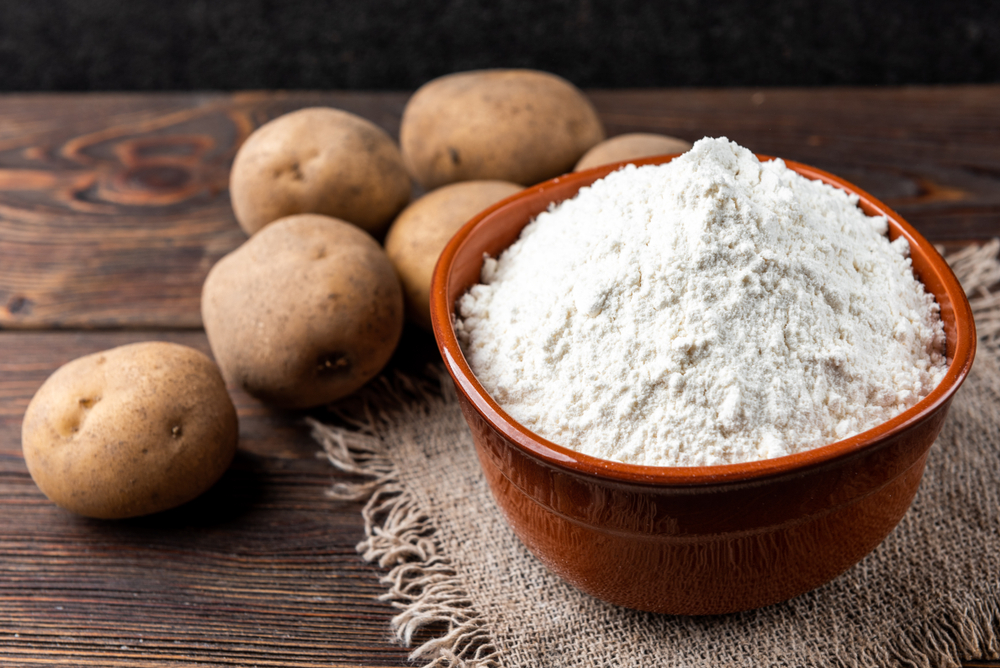Have you ever been in the middle of whipping up a favorite recipe and realized you’re out of vital wheat gluten? Not having vital wheat gluten is a problem that no one wants to run into; lucky for you, there are many options as alternatives like ready-made Seitan or Guar Gum. Multiple substitutes exist, but it is super easy to make your own vital wheat gluten right in your kitchen! There are plenty of gluten-free alternatives as well for those celiac sufferers.
Whether you use bread flour, xanthan gum, or pregel starch, there are many substitutes for vital wheat gluten. You could even make your own vital wheat gluten at home! The possibilities of vital wheat gluten alternatives are endless. You will never have to scramble up last-minute ideas again!
What is Vital Wheat Gluten?
Vital wheat gluten, also known as wheat gluten or wheat protein, is an uncommon ingredient that is typically used in commercial bakeries as a binding agent to bring breads, baked goods, or meals together.
Vital wheat gluten is a “super-powered flour” high in protein and gluten but has little starch. Along with high protein, it has a couple of other minerals such as vitamin D, Calcium, Iron, and Potassium.
A great benefit for you of vital wheat gluten is that it has fewer carbohydrates than regular flour, making it great if you are trying to stick to your low-carb diet.
Vital wheat Gluten can often be found in specialty or health stores as it is commonly used by those on a vegan or vegetarian diet.
What are the Uses of Vital Wheat Gluten?
Your possibilities of uses for vital wheat gluten are endless; you can use it in place of flour in almost any recipe, like meatloaf, veggie burgers, meatballs, and anything else that needs a binding agent. It holds ingredients together and adds and improves a bit of chewiness and crumb to bread or other baked goods.
The primary use of vital wheat gluten is to make Seitan, a high-protein vegetarian food derived from vital wheat gluten used in most Asian cuisines, bread, or bagel recipes.
Since vital wheat gluten is exceptionally nutritious, adding a bit to your flour in recipes can be very beneficial for a bit of extra protein, a few tablespoons can take you a long way.
What Can I Use Instead of Vital Wheat Gluten?
1. Protein Powder

First and foremost, protein powder. Protein powder, providing 20 to 24 grams of protein per scoop, is your best substitute if you want a lot of protein in your recipe. Using an unflavored protein powder in baked goods can give it that extra protein and flavor while maintaining a proper structure and texture, making it great for Seitan.
Protein powder is one of the better alternatives if you are looking for a substitute for breads, pasta, and other gluten-free food. Check the label on your protein powder if you’re looking for gluten-free, as most protein powders contain vital wheat gluten as an ingredient.
When using protein powder as a substitute for vital wheat gluten, use a quarter of the flour the recipe calls states.
2. Eggs
Next are eggs, a familiar binding agent and leavening agent in baking. Eggs can be a great source of protein, making them an excellent alternative to vital wheat flour. A whole egg contains about 6 grams of protein; removing the yolk diminishes the fat and cholesterol while still having 4 grams of protein.
Although eggs are a great alternative in adding moisture and helping the structure of baked goods, you should not use them to make Seitan or bread, as they will not provide the chewiness and elasticity that vital wheat gluten does.
Depending on the size of the recipe, one egg for every Tablespoon of vital wheat gluten should be perfect.
If you are vegan or vegetarian, eggs are most definitely off the list of substitutes for wheat gluten flour. That said, eggs are not an ideal alternative to wheat gluten flour.
3. Xanthan Gum
Xanthan Gum is formed when sugar and bacteria called Xanthominas Campestris are combined. After that, the mixture is fermented. Lastly, the dried-out mixture is ground down to a fine powder.
Xanthan Gum is primarily used to thicken doughs or pastes, making it a vital ingredient in baking. Xanthan Gum can be a perfect substitute by adding structure and elasticity to your dough.
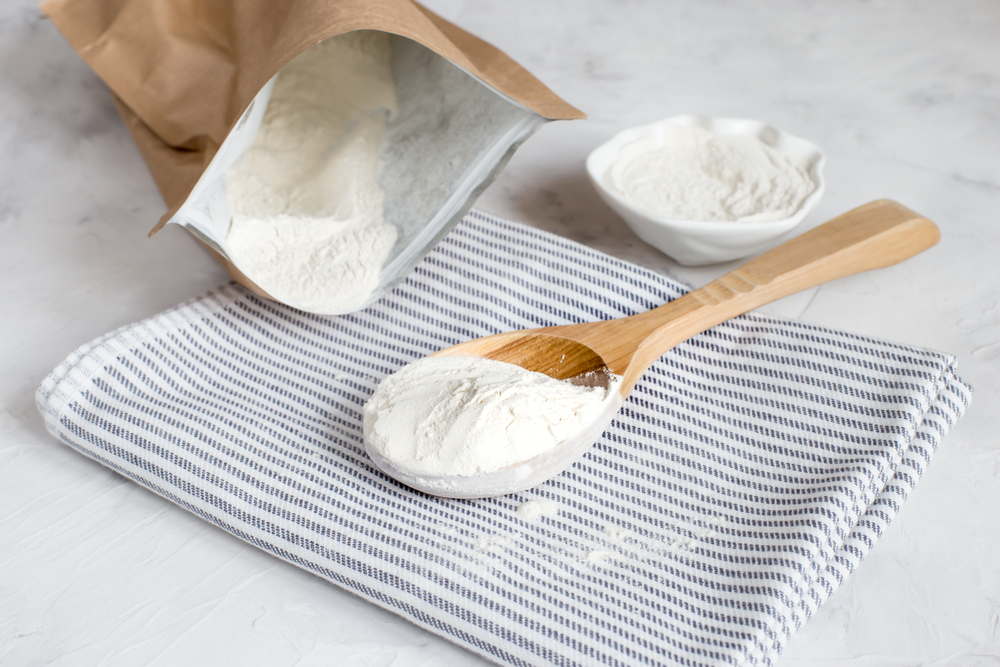
Xanthan Gum duplicates all of the effects of vital wheat gluten without gluten, making it a perfect alternative if you are going for a vegan or vegetarian meal. Although cross-contamination can happen at the factory, check the label to ensure there is no gluten contamination.
This alternative is perfect for baking as Xanthan Gum traps gas, causing the dough to rise and improve its overall texture. Use one teaspoon of xanthan gum for every cup of flour used in the recipe.
4. Guar Gum
Fourth on the list is Guar Gum. Guar Gum comes from complex carbohydrates derived from the seeds of the guar plant. Although similar to Xanthan Gum, it differs in several ways.
Guar Gum is generally used in doughs with smaller amounts of flour as the recipe may come out tough if it calls for lots of gluten. Guar Gum can often be useful as a thickening or wetting agent in baking and cooking.
As a binding agent, Guar Gum aids the dough in retaining structure, helping the ingredients bind together and not separate.
Guar Gum is activated by water; to do this is straightforward; mix one teaspoon of Guar Gum with one Tablespoon of water and let sit for five whole minutes before using.
5. Whey Protein
Similar to protein powder, Whey protein is derived from milk and typically comes in powder form. Whey protein can be an excellent substitute considering it has high protein levels and essential amino acids that vital wheat gluten can provide. Athletes and bodybuilders commonly use whey protein to build muscle and tone their bodies.
Although it seems to be a somewhat healthier alternative, it does not add gluten which is suitable for gluten-free diets but not for the elasticity and chewiness of bread. Whey protein can give a good structure and texture but will not deliver the same elasticity as vital wheat gluten.
To achieve the chewiness and elasticity of the bread, add a 1/2 teaspoon of xanthan gum as a thickening agent.
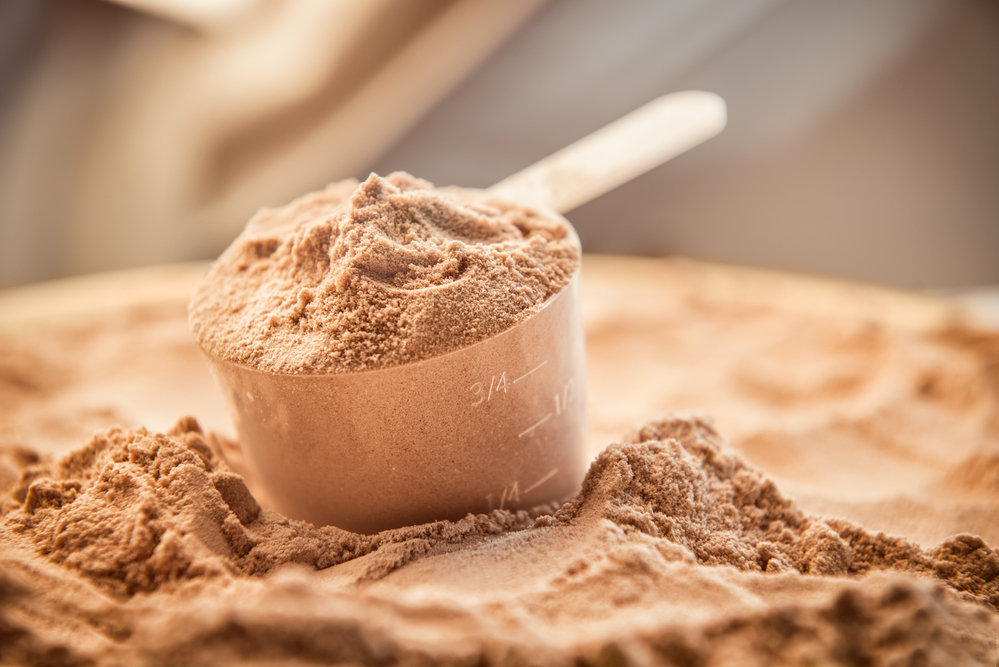
6. High Gluten Flour
High gluten flour is the most common and the absolute best alternative to vital wheat gluten substitutes unless you are looking for a gluten-free recipe. High gluten flour contains equal parts of gluten and flour. High protein flour can give the same protein levels as vital wheat but can be more glutinous than regular all-purpose flour.
Using high gluten flour as an alternative to vital wheat gluten can cause the dough to have a slightly sticky texture, making handling your dough a bit harder. Despite the sticky dough, once baked, high gluten flour can give baked goods or breads a light and airy texture.
With that said, high gluten flour is the best alternative if you use it for baking or vegan meats. High gluten flour does have less gluten content than vital wheat gluten, so you should double the amount of high gluten flour for vital wheat flour.
7. Bread Flour
Bread flour is used primarily for bread or other baked goods recipes and can be used as a coating for your meats and vegetables before you fry them! Bread flour contains a higher gluten content than plain old flour so substitute both the flour and vital wheat gluten for bread flour in your recipe.
Higher gluten content is a bit more glutinous than regular, so if you try to stick to a diet, this is not your best substitute. Bread flour can be an excellent substitute for vital wheat gluten in bread, baking, or even flakey croissants! Bread flour aids in giving your dough the desired structure and good gluten portion.
8. Regular Flour
You may wonder if plain, old, all-purpose flour will be a suitable substitute for vital wheat flour. Although it may suffice for Seitan, it is not ideal. It is not recommended unless you are desperate and out of other options.
For best results using regular flour, use the flour-washing method. Merely Knead the flour and water together to make a dough, then “wash” the dough in water to remove any excess starch to be left with sole gluten.
You will not have nearly as much gluten as you would with vital wheat gluten, but it will suffice. You can add a bit of xanthan gum as a thickening agent to ensure your baked goods keep their structure.

9. Pregel Starch
Pregel starch is a starch that has been precooked and dried on an extruder, or drum dryer, which makes the starch cold-water-soluble. Pregel starch is commonly used as a thickening agent and has been processed for water absorption at low temperatures, which makes it ideal for baking.
Pregel starch may require some effort to find in most grocery stores. That said, it is readily available online.
Pregel starch can be a fantastic substitute for vital wheat flour as it helps maintain structure and elasticity. To keep the form and elasticity, use one teaspoon of pregel starch for every cup of flour used in the recipe. With that, it is an excellent substitute for bread, faux meats, or baked goods.
10. Buy Ready-Made Seitan
Last but not least, when you feel you have exhausted all options, you should purchase ready-made Seitan. Prepackaged Seitan is frequently found in the fresh section of your local grocery store, usually in small packages or cans. As always, it is constantly available online.
Using ready-made Seitan can be one of the most effective alternatives as other alternatives sometimes don’t have the structure, texture, etc.
You are almost guaranteed your dish will turn out using ready-made Seitan in meals like fried vegan chicken or types of curries. Just ensure that you follow the recipe exceptionally closely.
Can You Make Your Own Vital Wheat Gluten?
Yes! Making vital wheat gluten is truthfully easy! The only supplies you need are as follows:
- Wheat Flour (Aim for 10% or higher protein for best results)
- Water (Filtered or tap, so long as it is safe.)
Making your vital wheat gluten at home is relatively easy and can be perfect for making your own Seitan, making starch noodles, or adding gluten to doughs for a bit of extra protein. At any rate, making your own vital wheat gluten at home is simple.
Precisely follow the below steps:
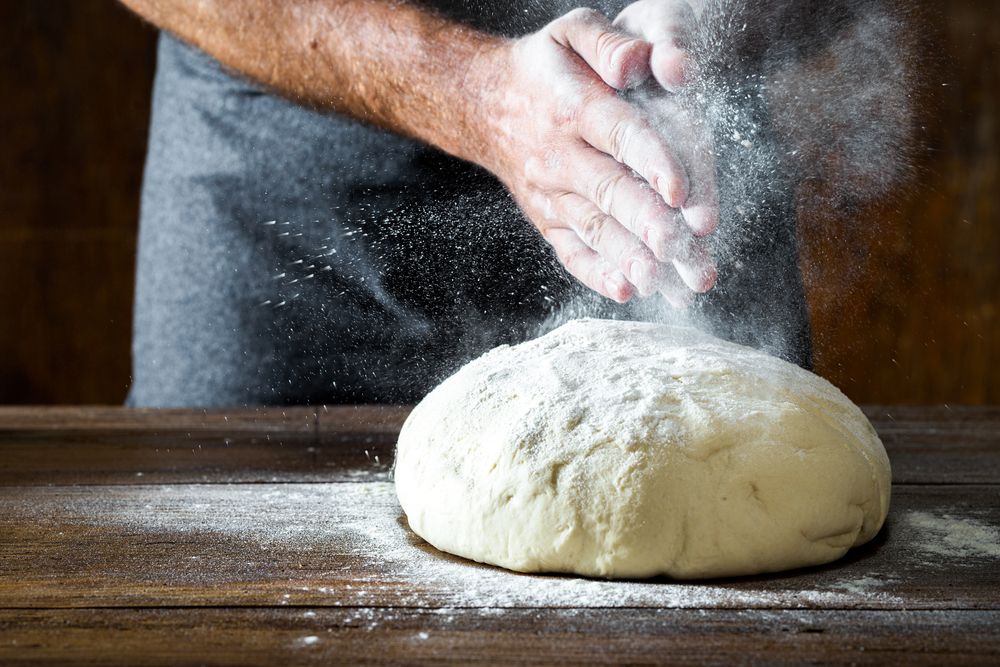
- Create a dough by combing your wheat flour and water together either by hand or in a stand mixer. Combine until you achieve a stiff dough.
- Allow your freshly made dough to rest for 30 minutes to one hour. During this time, the gluten strands will evolve. The dough will be very sticky; that is the texture you want!
- “Wash” the dough by filling a large container about 2/3 full with cold water. Add your dough to the container.
- Work the dough by kneading, stretching, squeezing, and folding it to extricate as much starch as possible. The water will turn an opaque white from the starch during this time.
- The amount of dough will lessen and go through transformations like falling apart, becoming stringy, and coming together as one mass.
- Next, rinse your dough to rid of the remaining starch. The easiest way to achieve this is by placing the dough into a strainer or fine colander while rinsing.
- Continue rinsing and kneading your dough until it all comes together as a single stretchy mass of gluten.
- Leave the container with the starchy water to one side. Do not drain!
Frequently Asked Questions
Can you use vital wheat gluten as protein powder?
Unfortunately no, you can not use vital wheat powder as protein powder. In some cases, if you are using it as a substitute in baking, yes, that would work! If you want to use it as an additive to your drink or smooth for extra protein, that is impossible as it is a dough once incorporated with water or that alike.
Is whey protein the same as protein powder?
Although they have lots of similarities, they do have differences as well.
Both whey protein and protein powder are ways to get additional protein into your daily diet. They differ in types of proteins, potencies, absorption, digestion rate, and cost.
Whey powder

- Whey powder is constructed from milk.
- Whey powder comes in three variations-
- Isolate
- Concentrate
- Hydrolysate
- You can easily and quickly digest whey powder.
- Whey powder typically is high quality.
- Whey powder can be anywhere from 35% – 90% protein per scoop, depending on the variation
- Whey powder has the highest rating of all protein powders.
- Whey protein contains active substances concerning amino acids that our bodies require.
Protein Powder
- Four different variations-
- Casein
- Soy
- Pea
- Hemp
- Protein powders can vary vastly in cost and quality.
- FDA does not regulate
- Studies have shown protein powders often contain heavy metals such as lead, cadmium, and arsenic
- Protein powders are suitable for vegans that need extra protein.
- Protein powder has a high concentration of proteins and amino acids.
Does vital wheat gluten cause inflammation?
Most of the general population can consume gluten with little to no problems. Yet, that is not always the matter. Celiac disease is a chronic digestive disorder that damages the small intestine primarily. Celiac disease is triggered by eating foods that contain gluten.
Experts estimate that about two million people have celiac disease in the United States and about 1% worldwide. Celiac sufferers, those with a wheat allergy, who are intolerant to gluten, or who have a non-celiac gluten sensitivity are the only people that have to worry about inflammation caused by gluten.
Conclusion:
To sum up vital wheat gluten substitutes, there are many different types and kinds you can try using! It is up to you to determine which alternative is best for you and your recipe. But from now on, you never have to ask, ‘What should I use to substitute vital wheat gluten?’ again!



